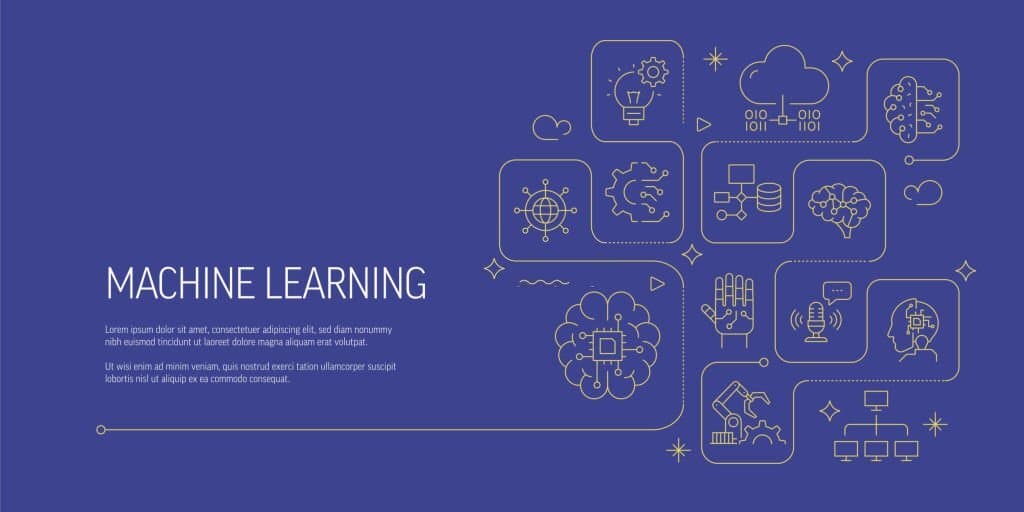In recent years, machine learning has become one of the most popular fields in computer science. Its ability to analyze and learn from data has made it a valuable tool for various industries, including business, healthcare, and robotics. This guide aims to help beginners learn machine learning from the basics to the pros. It covers essential concepts, techniques, and tools for understanding and implementing machine learning algorithms.
Additionally, the article discusses the practical applications of machine learning and the ethical considerations surrounding this field. By the end of the guide, readers will better understand what machine learning is and how it can be used to solve real-world problems.
Table of Contents
Purpose of the Guide
The purpose of this guide is to provide a comprehensive introduction to machine learning, from the basics to pro-level concepts. Machine learning is a complex field, and it can be challenging to know where to start. This guide aims to provide a clear and concise overview of machine learning, its essential concepts, and practical applications.
By the end of this guide, readers will have a better understanding of the following:
The basics of machine learning
This guide will cover the fundamental concepts of machine learning, including data science, programming, and statistics. The readers will learn about the different types of machine learning algorithms and the mathematical and computational methods used to create them.
Tools and techniques for machine learning
This guide will cover the essential tools and techniques used in machine learning, such as data preprocessing, feature engineering, model selection, and evaluation. The readers will learn how to use these tools to prepare data, build models, and evaluate their performance.
Practical applications of machine learning
This guide will cover the practical applications of machine learning in various industries, including business, healthcare, and robotics. The readers will learn how machine learning can solve real-world problems and create new opportunities for innovation.
Challenges and ethical considerations in machine learning
This guide will cover the ethical considerations and challenges of using machine learning. The readers will learn about data privacy, algorithmic bias, and accountability and responsibility in machine learning.
It is suitable for beginners just starting in the field and professionals who want to expand their knowledge. The guide aims to be accessible and easy to understand without sacrificing the technical depth required to understand the concepts thoroughly.
What is Machine Learning
Machine learning is a subset of artificial intelligence that teaches computers to learn and improve by using algorithms and statistical models to analyze and make predictions based on data. It involves using mathematical and computational methods to teach computers to recognize patterns in data and make decisions based on that data. Machine learning aims to enable computers to learn and improve from experience without being explicitly programmed to do so.
Importance of Machine Learning
Machine learning is quickly becoming one of the essential fields in technology. Its ability to analyze and learn from data has made it a valuable tool in various industries, including business, healthcare, and finance. In this section, we will discuss the importance of machine learning and its impact on different fields.
-
Automation
Machine learning algorithms can automate many tasks once performed manually, saving time and increasing efficiency. For instance, a bank can use machine learning to detect fraudulent transactions and prevent them in real-time. Similarly, a manufacturer can use machine learning to optimize the supply chain and reduce costs.
-
Personalization
Machine learning can help businesses personalize their services and products to meet the needs of individual customers. For example, an e-commerce site can use machine learning to recommend products that a customer will likely buy based on their previous purchases and browsing history.
-
Healthcare
Machine learning has enormous potential in the healthcare industry. It can help doctors and researchers analyze patient data to make better diagnoses and develop new treatments. For example, machine learning can be used to detect early signs of cancer by analyzing medical images.
-
Predictive analytics
Machine learning can help organizations make accurate predictions about future events based on historical data. For instance, a stock market analyst can use machine learning to predict the behavior of the market based on historical data and market trends.
-
Better decision making
Machine learning can help decision-makers make informed decisions by providing relevant insights from large amounts of data. For instance, a marketing team can use machine learning to analyze customer behavior and make data-driven decisions on marketing strategies.
Understanding the Basics of Machine Learning
Introduction to data science
Data science is an interdisciplinary field that involves the use of statistical and computational methods to extract insights from data. It combines mathematics, statistics, and computer science elements to analyze and interpret large datasets. In this section, we will provide an introduction to data science and its role in machine learning.
What is data science?
Data science involves using statistical and computational methods to extract insights from data. It consists in collecting, cleaning, and processing data, creating visualizations and models, and making predictions based on the data. Data science is used in various fields, including finance, healthcare, and e-commerce, to analyze and make informed decisions based on data.
The role of data science in machine learning
Data science is an essential component of machine learning. Machine learning algorithms require large amounts of data to learn and improve. Data science provides the tools and techniques necessary to collect, process, and analyze data to create machine learning models. Data science helps identify relevant features, preprocess data, and evaluate model performance.
Read also: Top 7 new technologies you should start learning in 2023
The data science process
The data science process involves several steps, including data collection, cleaning, preprocessing, exploration, and modeling. Data scientists use various tools and techniques to create predictive models that can provide insights into data. The data science process aims to extract valuable insights from data and use them to make informed decisions.
Data science is an essential component of machine learning. It involves using statistical and computational methods to extract insights from data. The data science process involves several steps, from data collection to data modeling, and it is crucial for creating predictive models. As the volume of data continues to increase, the role of data science in machine learning will become even more critical.
Hey! Follow us on Twitter to get update on posts like this one.
Introduction to Programming
Programming is an essential skill for machine learning. Machine learning algorithms require code to build, train, and evaluate models. In this section, we will provide an introduction to programming and its role in machine learning.
What is programming?
Programming involves writing code that a computer can understand and execute. It uses a programming language to create algorithms, which are sets of instructions that tell a computer how to perform a task. Programming languages are used to develop software, web applications, and machine learning models.
The Role of programming in machine learning
Programming is an essential component of machine learning. Machine learning algorithms require code to create, train, and evaluate models. Programming languages such as Python and R are popular in machine learning because of their versatility and extensive libraries. These libraries provide pre-built algorithms easily integrated into machine learning models.
Popular programming languages for machine learning
Python is the most popular programming language in machine learning. It is easy to learn, versatile, and has a vast library of machine learning frameworks, including TensorFlow and PyTorch. R is another popular programming language in machine learning, primarily used for statistical modelling.
Introduction to Statistics
Statistics is a branch of mathematics that involves data collection, analysis, and interpretation. It provides a way to understand and make sense of data and is an essential component of data science and machine learning. In this section, we will provide an introduction to statistics and its role in machine learning.
What are statistics?
Statistics is the science of collecting, analyzing, and interpreting data. It involves using mathematical methods to summarize and describe data, identify patterns, and make predictions. Statistics is used in various fields, including finance, healthcare, and social sciences, to analyze and make informed decisions based on data.
The role of statistics in machine learning
Statistics is an essential component of machine learning. Machine learning algorithms require statistical methods to extract insights from data, such as hypothesis testing, regression analysis, and clustering. Statistical analysis helps identify significant features, estimate parameters, and evaluate model performance.
Read Also: Effect of Mobile Technology on the Nigerian Society
The statistical process
The statistical process involves several steps: data collection, exploration, modeling, and inference. The process involves identifying relevant variables, selecting appropriate statistical methods, and interpreting results. The statistical approach aims to extract data insights and make informed decisions based on those insights.
Tools and Techniques for Machine Learning
Data preprocessing
Data preprocessing is an essential step in machine learning. It involves transforming raw data into a clean and organized format suitable for analysis. Data preprocessing includes techniques such as cleaning, normalization, and feature engineering. This section will explore the importance of data preprocessing in machine learning and the methods used to preprocess data.
The importance of data preprocessing
Data preprocessing is crucial in machine learning because it helps remove noise, inconsistencies, and errors in the data. By preprocessing data, we can create high-quality datasets that are more reliable and suitable for analysis. Preprocessing data also helps improve the accuracy of machine learning models and reduces the risk of overfitting.
Techniques for data preprocessing
There are several techniques for data preprocessing, including cleaning, normalization, and feature engineering. Cleaning involves removing missing values, dealing with outliers, and correcting errors in the data. Normalization consists in scaling the data to a standard range, which can help improve model accuracy. Feature engineering involves selecting and transforming features to enhance the model’s performance.
Tools for data preprocessing
Various tools and libraries are available for data preprocessing, such as pandas, NumPy, and sci-kit-learn. These tools provide efficient and effective ways to preprocess data, from cleaning to feature engineering. These tools can help automate the data preprocessing process, making it easier and more efficient.
Feature engineering
Feature engineering selects and transforms features from raw data to create inputs for machine learning algorithms. It involves specifying the most relevant components and converting them to improve model performance. In this section, we will discuss the importance of feature engineering and some of the techniques used in the process.
The importance of feature engineering
Feature engineering is crucial for creating accurate and effective machine-learning models. The features’ quality in a model can significantly impact its performance. Feature engineering allows data scientists to select the most relevant features, remove irrelevant or redundant components, and transform elements to improve model accuracy.
Techniques for feature engineering
Various techniques are used in feature engineering, including scaling, normalization, one-hot encoding, and feature selection. Scaling and normalization ensure that features are on the same scale, while one-hot encoding is used to transform categorical variables into numerical parts. Feature selection involves selecting the most critical components and removing redundant or irrelevant ones.
Feature engineering best practices
There are several best practices to follow when conducting feature engineering:
- Understanding the data and the problem you are trying to solve is essential.
- Feature engineering should be an iterative process that involves experimenting with different feature sets and evaluating model performance.
- It is crucial to avoid overfitting using cross-validation and regularization techniques.
Model selection and evaluation
After preprocessing and feature engineering, the next step in building a machine learning model is selecting the appropriate algorithm and evaluating its performance. The process of choosing the best model is crucial, as the version of the model depends on the selected algorithm. In this section, we will discuss the importance of model selection and evaluation.
Model selection
There are many different machine learning algorithms, each with strengths and weaknesses. Model selection involves choosing the best algorithm for the given problem. Some factors to consider when selecting an algorithm include the data type, the problem’s complexity, and the available computational resources. Common types of machine learning algorithms include linear regression, decision trees, and neural networks.
Model evaluation
Once a model has been built, it must be evaluated to determine how well it performs on unseen data. Model evaluation involves testing the model on a separate data set, called the test set, and measuring its performance. Standard metrics used to evaluate models include accuracy, precision, recall, and F1 score. The choice of metric depends on the problem and the desired outcome.
Cross-validation
Cross-validation is a technique used to evaluate model performance when the amount of data is limited. It involves dividing the data into multiple subsets, called folds, and training and testing the model on different combinations of the folds. Cross-validation provides a more robust estimate of model performance and helps to prevent overfitting.
Practical Applications of Machine Learning
Machine learning has numerous practical applications across various industries, including healthcare, finance, and e-commerce. In this section, we will explore some of the most common applications of machine learning and how they are used to solve real-world problems.
-
Healthcare
Machine learning analyzes patient data and develops personalized treatment plans. It predicts patient outcomes, identifies risk factors and monitors patient health. Machine learning can also diagnose diseases, analyze medical images, and develop new drugs.
-
Finance
Machine learning analyzes large datasets and makes informed investment decisions. It predicts stock prices, analyzes market trends, and detects fraudulent activities. Machine learning can also automate financial processes, such as credit scoring, loan approvals, and fraud detection.
Read Also: Top 6 Exciting Technology Trends for Young People
-
E-commerce
Machine learning is used in e-commerce to analyze customer data and provide personalized recommendations. It predicts customer preferences, explores buying patterns and detects fraudulent activities. Machine learning can also optimize pricing, improve supply chain management, and reduce customer churn.
-
Robotics
Machine learning is used in robotics to enable robots to perform complex tasks. It teaches robots how to navigate and interact with the environment, recognize objects, and make decisions based on sensory input. Machine learning can also optimize robotic movements and improve their accuracy and efficiency.
It also analyzes data, makes predictions, and automates processes, enabling businesses to make informed decisions and improve their operations.
Challenges and Ethical Considerations in Machine Learning
Machine learning has the potential to revolutionize various industries and solve real-world problems. However, it also poses significant challenges and ethical considerations that must be addressed. In this section, we will discuss some key challenges and ethical considerations in machine learning and how they can be mitigated.
-
Data privacy
One of the most significant challenges in machine learning is data privacy. Machine learning models require large amounts of data to learn and improve, but the collection and use of personal data can raise privacy concerns. To mitigate this challenge, machine learning practitioners must implement robust data privacy measures to protect personal information. This includes de-identification of data, informed consent, and data access controls.
-
Algorithmic bias
Another challenge in machine learning is algorithmic bias. Machine learning algorithms can produce biased results if the training data is personal. This can lead to discrimination and unfairness, particularly in critical healthcare and criminal justice treatise. To address this challenge, machine learning practitioners must ensure that the training data is diverse and unbiased and the algorithms are regularly tested for bias.
-
Accountability and responsibility
Machine learning also raises significant ethical considerations related to accountability and responsibility. The use of machine learning models can have real-world consequences, and it is crucial to ensure that the models are developed and deployed responsibly. This includes providing transparency in decision-making, creating clear accountability structures, and ensuring that the models are used for ethical purposes.
Conclusion
In conclusion, machine learning is a fascinating and rapidly growing field that has the potential to revolutionize many industries. This guide has introduced the basics of machine learning, the essential tools and techniques used, and advanced topics and practical applications. By following this guide, you should comprehensively understand machine learning and its potential application.
As with any rapidly evolving field, there are still many challenges and ethical considerations to be addressed in machine learning. It is essential to approach machine learning with a responsible and ethical mindset and consider the impact it can have on individuals and society as a whole.
In the end, the applications of machine learning are limitless, and it has the potential to revolutionize many industries. By understanding the concepts covered in this guide, readers can unlock the full potential of machine learning and use it to create new opportunities and solve complex problems.
Looking for a space where you can discuss issues relating to the technology industry? Join our whatsapp communityand meet like minded people, who are ready to share ideas with you.
About the Author
Adedeji Jedidiah Ogunsola is a senior writer covering science and technology and delivering all the best updates on ideas you love and some you never knew about. Previously, he was a Blockchain and technology writer at The African DeFi Oracle and worked at HalliDay Consults. In 2021, he won the Technology Journalist of the Year at Lens Inc. writers’ award. He was born in Ibadan, lives in Akure, and is a graduate of the Federal University of Technology Akure. When not working, he’s likely spending time playing chess or reading.
About Author
- Op-Ed are articles published by guest authors. We no longer accept guest posts. However, we are still open to adding long-term content contributors to our team of insightful writers. To write for us, please check out inisght.ng/guest-post.
Latest entries
 Business InsightsMarch 27, 2024Effective Strategies for Managing Cash Flow in a Nigerian Business
Business InsightsMarch 27, 2024Effective Strategies for Managing Cash Flow in a Nigerian Business

 Business InsightsFebruary 12, 2024Privacy Policy for Business Websites: All You Need to Know
Business InsightsFebruary 12, 2024Privacy Policy for Business Websites: All You Need to Know

